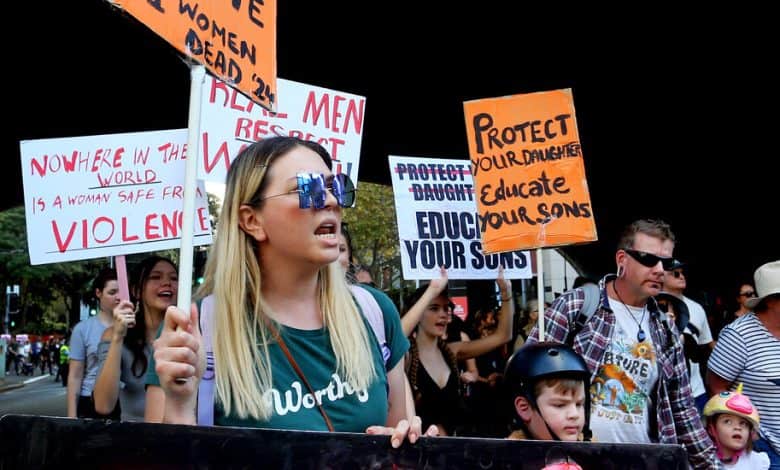Australia’s ‘National Crisis’ of Domestic Abuse

The Australia Letter is a weekly newsletter from our Australia bureau. Sign up to get it by email.
Late last month, Prime Minister Anthony Albanese declared that violence against women had become a “national crisis.” His comments came after thousands rallied in Australia’s big cities to demand action from the government in the face of alarming statistics, with activists identifying at least 29 women who have been killed in Australia so far this year.
On top of that, newly released data from the government found that in the 2022-2023 fiscal year, 34 women were killed by a current or previous intimate partner, up 28 percent from the previous fiscal year. In other words, the trend lines for Australia’s domestic violence problem are heading in the wrong direction. While the rates are lower than in the United States, for Australians, the risk of violence and death at the hands of a partner is now increasing.
The government has now responded: In the new federal budget, Mr. Albanese’s government committed 1 billion Australia dollars, about $665 million, over five years to help women and children fleeing domestic violence.
But among those who work with victims and survivors, optimism is hard to find.
Many advocates, like Michelle Glasgow, general manager of Women Illawarra, a nonprofit founded in 1979 that provides services to rural areas in New South Wales, report many decades’ worth of experience with public outrage — seeing countless women march to end domestic violence, stop sexual assaults, gain access to health care and safe housing, and demand fair and equal access to jobs. None of it, they note, has produced much progress.
“We’re still beating on that same drum,” Ms. Glasgow said.
The problem persists, she added, because too many communities and men are still stuck on the “laissez-faire attitude of ‘She’ll be right, mate.’”
“She won’t be right, mate,” she said.
In her area, demand for Women Illawarra’s services — support circles, education programs, court advocacy and pathways for abused women going in and out of the justice system — has risen exponentially in recent years, especially after the pandemic lockdowns. Many women are stuck in what she described as a constant cycle of seeking accountability and safety.